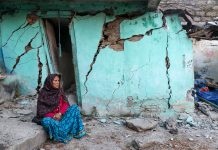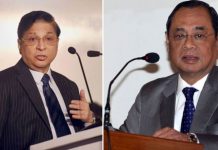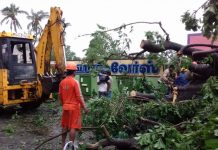From a security point of view, Kashmir is now a considerably more peaceful place, which the government boasts about as its singular achievement following the withdrawal of the region’s special status. This should normally pave the way for the polls. A report by Riaz Wani
On February 20, the Centre decided to embark on a phased withdrawal of the Army from Kashmir. This is the first time since the separatist struggle broke out in Kashmir around 33 years ago, that New Delhi has taken the step. But does this make it significant? It doesn’t. The Army will be replaced by paramilitary forces that are equally trained in counter-insurgency operations. So, on ground, this would mean little difference.
The withdrawal has a symbolic value though: It projects that normalcy has returned to the Valley following the withdrawal of the special status of the union territory in August 2019.
The Rashtriya Rifles, which was deployed in Kashmir, was drawn from various infantry units in 1990 will be reportedly withdrawn in three phases. There will be a trial withdrawal of troops from South Kashmir districts such as Anantnag and Kulgam. The subsequent pullback will take place after assessing the situation.
Jammu and Kashmir, according to an estimate, has 1.3 lakh soldiers – 80,000 of them deployed along the border and rest of them in charge of anti-militancy operations. Similarly, of the 60,000 CRPF personnel in the union territory, 45,000 are deployed to Kashmir alone. Jammu and Kashmir Police has 83,000 personnel, most of whom are engaged in fighting militancy.
What about AFSPA?
Much like the withdrawal of the Army, which has been a sign of normalcy, the revocation of Armed Forces Special Powers Act (AFSPA) has also been a metric of the return to peace. But the centre has so far stubbornly refused to withdraw the law, more so, the current BJP government.
The AFSPA was enforced in the Kashmir Valley in 1990 – a year after the outbreak of militancy – and was extended to Jammu a decade later. The Act gives the armed forces immunity from prosecution while operating in the internal conflict zones.
In 2013, the then J&K Chief Minister Omer Abdullah almost got the then UPA government to agree to a phased diminishing of the AFSPA from the then state, starting with the areas with zero militant presence and, consequently, zero army footprint. But, zero footprint or no, the army consistently stonewalled any determined bid to remove the AFSPA by invoking worst-case security scenarios should the Act be lifted, even if partially.
Earlier in 2011, with militancy-related fatalities down to 183, the then General Officer Commanding of the Army’s 15 Corps in Srinagar, Lt General Syed Ata Hasnain, had even highlighted the unlikely possibility of Kashmir becoming an independent nation by 2014 should the AFSPA be withdrawn. The army typically becomes more fearful anytime it perceives a threat from the potential power vacuum that the repeal of the AFSPA would create. Lt General Hasnain, in fact, raised the bogey when many in the UPA government, including the then home minister P Chidambaram, were inclined to review the Act.
Does planned Army pullback mean peace?
Contemplated withdrawal of Army from Anantnag and Kulgam is telling. Both are districts in South Kashmir which has been a stronghold of militancy since 2014 when the then Hizbul Mujahideen commander Burhan Wani revived a flagging militancy by using social media. Ever since the withdrawal of J&K autonomy, more than 500 militants have been killed, most of them local youth and hailing from South Kashmir. This has considerably thinned the footprint of militancy in the area helping restore some peace.
A recent report by the Ministry of Home Affairs underlines the transformation in Kashmir over the last four years on economic and security fronts. The change has happened incrementally over the period with violence declining sharply, reaching its lowest last year.
In 2022, the MHA review said that the union territory witnessed “a 54 percent reduction in terrorist incidents, a 22 percent drop in recruitment of militants and 84 percent decline in the deaths of security forces.” In real terms, the militancy-related violence has decreased from 417 incidents in 2018 to 229 in 2021 while the number of slain security personnel had reduced from 91 in 2018 to 42 in 2021.
On the development front, the report says that the BJP government at the centre has brought an investment of Rs 56,000 crores in just three years. Under the Prime Minister’s Development Package in Jammu, the report mentions, J&K got about 63 projects in hydroelectricity at a cost of Rs 80,000 crore.
One biggest indicator of the new normalcy, as highlighted by the home minister, has been the growth of tourism, And last year is said to have broken all previous records. According to the tourism department officials, the number of tourists Kashmir received this year is the highest so far – over one crore – beating by far even the pre-turmoil period record. This has generated employment for the thousands of people who had lost their jobs during Covid pandemic. Going forward, the situation looks set to only improve further, hopefully with all other political and social drivers of the place remaining unchanged.
But this still hasn’t brought the government around to holding elections in the union territory. In January, Chief Election Commissioner (CEC) Rajiv Kumar said that the assembly elections in the union territory will be held with various factors in mind, including “weather and security concerns.” The CEC said that the delimitation process and the revision of electoral rolls in the union territory has been completed. Similarly, returning officers and additional electoral registration officers have also been appointed.
At the time the CEC spoke, Kashmir was in the middle of winter, and now it is the onset of spring but there is still no word on the holding of Assembly election in the union territory. And as for the security, Kashmir is now a considerably more peaceful place, a surprising turn of events which the government boasts about as its singular achievement following the withdrawal of the region’s special status. So, now, in a sense, is the ideal time for the Assembly polls.
J&K has not had an elected government since June 2018, when the Governor’s rule was imposed after the PDP-led coalition government lost its majority following the withdrawal of support by the BJP. The last four years have witnessed a drastic political makeover of the state-turned-union territory, so much so that in many aspects, the current J&K bears little resemblance to what it was pre-August 2019.
This should normally pave the way for the polls but this doesn’t seem to be the case. For some reason, the elections keep getting deferred. More so, at a time when there is a palpable desire for polls in the region. If deferred further, there will be little scope for the polls considering general elections are due to be held in May 2024. So, the decision to withdraw the Army means little if it doesn’t lead to redeeming changes on the ground in Kashmir.













